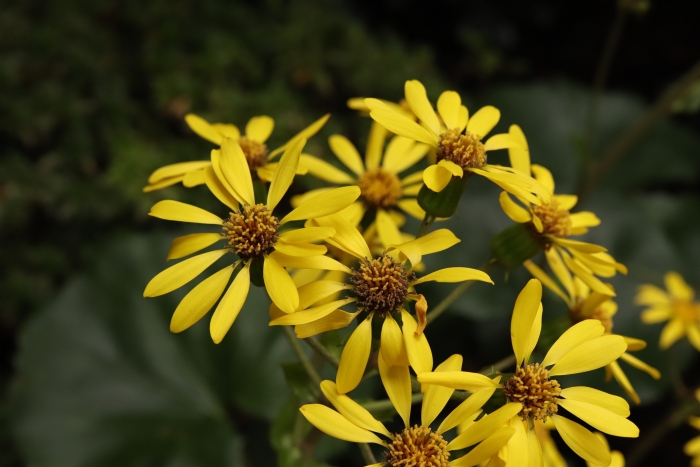Leopard Plant
(Farfugium japonicum)
Leopard Plant (Farfugium japonicum)
/
/

Se Lena
CC BY 4.0














































Estimated Native Range
Summary
Leopard Plant is valued for its bold foliage and shade tolerance, making it a popular choice for woodland gardens, shaded borders, and container plantings. It is also used in Asian gardens for its aesthetic appeal and textural contrast. While it is hardy in coastal or mild areas, it does require protection from cold winds and harsh frosts. It thrives in part shade or full shade, preferring consistently moist soil with good drainage. Leopard Plant is relatively low maintenance but can be susceptible to slugs and snails, which may damage the leaves. It is not typically invasive but should be monitored in optimal growing conditions to ensure it does not spread too aggressively.CC BY-SA 4.0
Plant Description
- Plant Type:
- Height: 1-2 feet
- Width: 1-2 feet
- Growth Rate: Moderate
- Flower Color: Yellow
- Flowering Season: Fall
- Leaf Retention: Evergreen
Growth Requirements
- Sun: Part Shade, Full Shade
- Water: Medium
- Drainage: Fast, Medium, Slow
Common Uses
Border Plant, Deer Resistant, Edible*Disclaimer: Easyscape's listed plant edibility is for informational use. Always verify the safety and proper identification of any plant before consumption., Erosion Control, Groundcover, Low Maintenance, Showy Flowers, Street Planting, Water Garden
Natural Habitat
Stream banks and seashores in Japan, Korea, and Taiwan
Other Names
Common Names: Green Leopard Plant, Tractor Seat Plant, Leopardplant, Leopardenpflanze, Tigertass, Da Wu Feng Cao, Tsuwabuki
Scientific Names: , Farfugium japonicum, Farfugium giganteum, Ligularia tussilaginea, Senecio kaempferi, Farfugium japonicum var. formosanum, Ligularia kaempferi, Ligularia tussilaginea var. formosana, Farfugium japonicum subsp. japonicum, Tussilago japonica
GBIF Accepted Name: Farfugium japonicum (L.) Kitam.